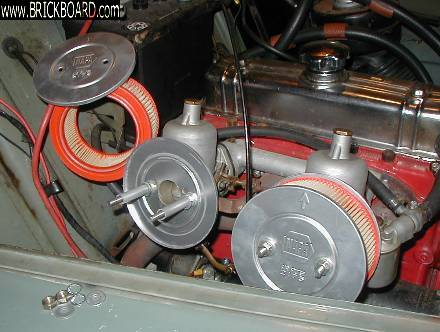|
OK, so there's been a success and a failure. The failure is that it turns out I was never leaking from the fuel lines at all, it was a red harring. The success is that I've discovered the real source, which is the overflow holes on the top of the float bowl, the tiny ones just beneath the fuel nipple.
It appears that each bowl is overflowing at random times. That is, I can pop the hood and one bowl will be dry, while the other one is trickling fuel out of the hole. I can drive for 5 minutes, and open the hood again, except this time, the other bowl is leaking, and the first one is now dry. Drive another 5 minutes, and either both can be leaking, or neither. The only correlation is that is appears they are more prone to leaking after I get off the freeway where I've been at high RPM's for a while.
My only guess is that each of the floats are getting stuck in the down position, so that fuel is allowed to continue pumping into the bowl, causing the overflow. Why both needles would fail at the same time, but not 100% of the time is a mystery to me. The needle check valves in the floats are 6 months old, same as the rest of the carb rebuild. Can these needle valves fail in this manner, or is there another issue? I opened the bowls and everything looks clean and free moving, no binding that I could see in the needles.
One thought would be that water in the fuel would freeze inside float needle and stick it open, causing overflow. However, why it would only get stuck down while at high flow for a long time when the engine is warm doesn't make much sense to me.
The other idea that people have mentioned is a failing fuel pump. Mine is 6 months old, like the rest of my rebuild, and I have a hard time believing the failure mode of a mechanical pump like this is to produce a higher pressure. Is there something I'm missing there?
Any insight would be helpful.
|

